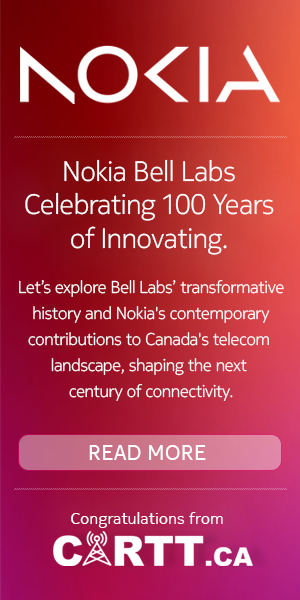NEW ORLEANS – Convergence used to be considered a four-letter-word of sorts, too attached to the tech bubble which exploded so famously and harshly seven or so years ago to be taken seriously.
Many never gave up on the word or the concept, agreeing instead that the types of convergence envisioned and tried in the late 1990s and early part of this decade was either wrong, or just too early.
But can it be that in 2008, we’re still too early for convergence?
That was the question I had this afternoon at the conclusion of the general session concentrating on that very word. All I could think of was: “So many senior executives, so few answers.” That’s not meant as criticism of the execs in question because it’s not like I have any answers, either but it just seems like when it comes to interactive advertising or mobile content or even broadband content, we’ve had sorted more than a few of these issues out by now.
Today’s general session at the National Cable Television Association’s Cable Show here in New Orleans featured Sun Microsystems Scott McNealy, Charter Communications CEO Neil Smit, Time Warner Cable CEO Glenn Britt, Disney Media Networks co-chairman George Bodenheimer and BET Networks CEO Debra Lee.
And there were more questions from the panel about where we are and where we’re going than answers.
At least they were all positive. “I don’t think there’s ever been a better time to be in the business. Everywhere the (advertising) pie is growing,” said Bodenheimer, speaking about traditional advertising, online capabilities and new platforms. “There are more opportunities to reach your customer than ever before.”
Which can be a problem for the always testy relationship between cable companies and programmers, noted Britt.
When MSOs are paying hundreds of millions of dollars to programmers for their popular content who in turn are now placing a lot of that content – for free – on the web, that’s an issue. “(Programmers) ask us ‘you really don’t mind if we do that, do you?’” said Britt. “Well guess what, we do mind.”
Later, in a press conference after the session Britt modified the statement somewhat saying he said that to stir the pot in a session he termed “a little dull”, but did defend the position.
He said he’s happy to see content on the Internet because “it makes (consumers’) lives easier.” But programmers have this tendency to divide the rights they sell into little silos based on geography or distribution platform or release windows. “Technology is collapsing all that,” said Britt.
The existing business model has been a successful one for both carriers and programmers and everyone recognizes change is happening but when premium content is available for a fee from cable but free on broadband, “ultimately, you’re eroding that other model,” said Britt.
“We are the ones who guarantee that revenue and ultimately, we will have to react at some point.”
Having content in as many places as possible, including with MSOs’ on demand platforms, is all part of the brand-building and brand maintenance process for channels and their programs, said MTV Networks Judy McGrath, who said her company has not only pushed the networks, but the shows themselves – like Dora the Explorer and the Daily Show with Jon Stewart on all platforms – as brands.
Despite concerns about cannibalizing established business models, “All that value just accrues back to the brand,” added McGrath. “(Brands) are a real advantage in this massively fragmented world.” And thankfully, despite convergence and fragmentation, “hits still trump those other things,” she added.
So, we know hits still work and we know programmers and carriers still butt heads. But the heart of the matter is that everyone is still in experimentation mode with what broadband and mobile can now offer.
Channels are experimenting with user generated content and still experimenting with interactivity. ESPN is still pushing ESPN 360, which carries original content only on the web, but it has yet to fully establish itself. MTV Networks is placing 50 hours of content on Fancast, Comcast’s online, on demand viewing and content search web portal. And everyone is wondering what the right model is for mobile viewing, beyond being sure that people only really want to see clips and short content on their cell phones.
“It’s great to be able to be in every space and be where people are watching,” added McGrath.
Bodenheimer also scooped an underling who will be in a session tomorrow to talk about the Cox and Disney PVR test where Cox Cable made some ABC/Disney content available any time they wanted, without having to pay for a DVR. The caveat is that they couldn’t fast-forward through the commercials.
“A year later, that’s an unequivocal success,” said Bodenheimer, who reported that 25% of the people who watched on a delayed basis said they wouldn’t have watched the show or shows in question at their linear air date and time. “That’s a new model with new viewers,” he said.
Britt also talked of Tim Warner Cable’s “Start Over” network DVR service, too as said that too has increased viewership. “We’re using the technology to create opportunities,” he added. What he didn’t say is some content providers have threatened lawsuits over the service, which is still in test mode.
But, these new applications have to be tested and played with and just tried – and by the big companies. Risks have to be taken. Because if popular content isn’t made available in easy ways to consumers, or if it’s somehow walled in, that’s when lucrative business models can be seriously injured. “We collectively have to make functionality available to people and when we don’t, that’s when people are going to steal is and whole business models go south,” said Britt.
So keep experimenting. Just don’t expect any concrete answers… yet.
Cartt.ca editor and publisher Greg O’Brien is in New Orleans this week covering The Cable Show.



